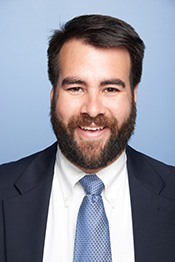Automatic Segmentation of Salivary Glands and Skeletal Muscles for MR-Based Daily Adapted Head and Neck Cancer Radiotherapy
C Cardenas1*, T Ermongkonchai2, D Xing3, Z Iqbal1, A Mcdonald1, A Mohamed4, B Harris3, R Khor3, H Bahig5, C Fuller4, S Ng3, (1) The University of Alabama at Birmingham, Birmingham, AL, (2) University Of Melbourne, Melbourne, Australia,(3) Austin Health, Melbourne, Australia, (4) UT MD Anderson Cancer Center, Houston, TX, (5) CHUM
Presentations
PO-GePV-M-248 (Sunday, 7/10/2022) [Eastern Time (GMT-4)]
ePoster Forums
Purpose: To develop an MR-based auto-segmentation model for automated contouring of salivary glands and skeletal muscles in the head and neck for use in treatment response assessment. The hypothesis for this study is that high-quality MR-imaging allows for accurate auto-segmentation of these head and neck structures for automated dose response in daily online adaptive radiotherapy.
Methods: We used The Cancer Imaging Archive’s (TCIA) collection from the “AAPM RT-MAC Grand Challenge 2019” to train our model. This collection includes T2-weighted MR images acquired prior to radiotherapy treatment commencement with patients setup in the treatment position. Scans from this collection were manually contoured by a sub-specialized head and neck radiation oncologist to include 18 normal structures, including glands and skeletal muscles. This data was used to train a 3D U-net, using 50 patients for training and 5 for final contour evaluation. The quality of the contours were evaluated using the overlap (Dice Similarity Coefficient – DSC) and distance metrics (95th Hausdorff distance – 95HD), as well as via slice-by-slice evaluation by a radiation oncologist.
Results: The mean (± std. dev.) DSC and 95HD values for all structures across the 5 test patients were 0.85 ± 0.07 and 3.7 ± 3.0 mm, respectively. Radiation oncologist qualitative evaluation of the automatically generated contours deemed all contours within reasonable uncertainty and acceptable for quantitative treatment response assessment.
Conclusion: We generated a contour dataset and trained an auto-contouring model for comprehensive evaluation of doses delivered to head and neck salivary glands and skeletal muscles throughout the course of head and neck cancer radiotherapy. The accuracy of our model needs to be further validated with external image datasets prior to implementation for treatment response assessment studies are conducted.
Keywords
Taxonomy
IM/TH- image Segmentation: MRI
Contact Email



